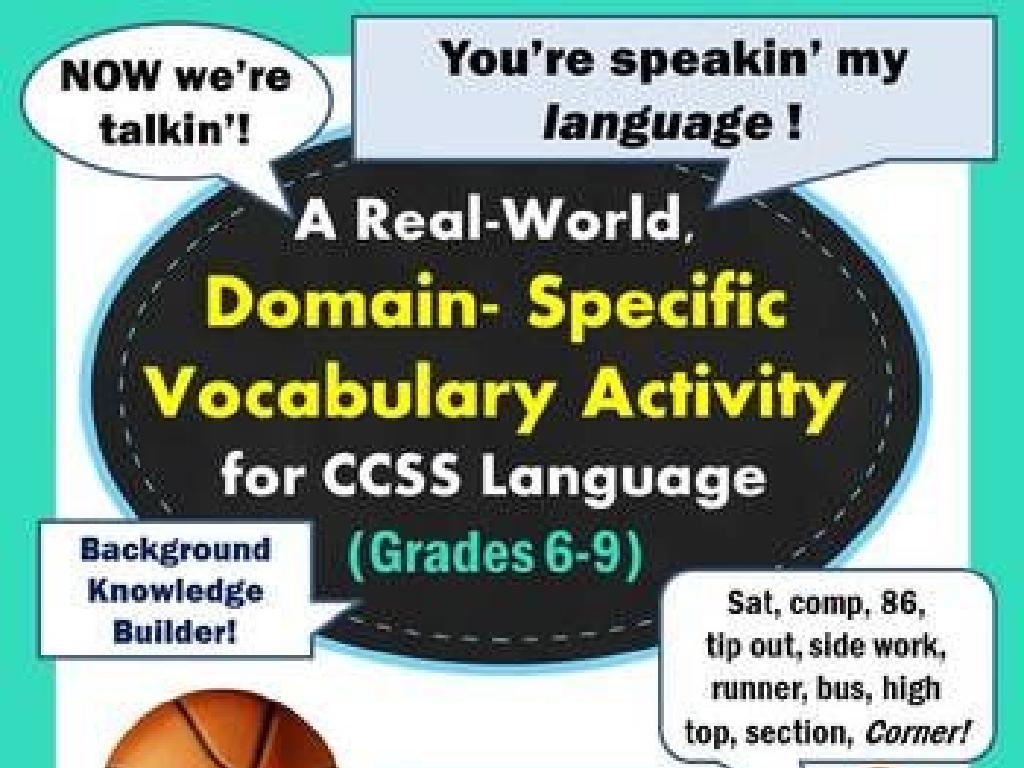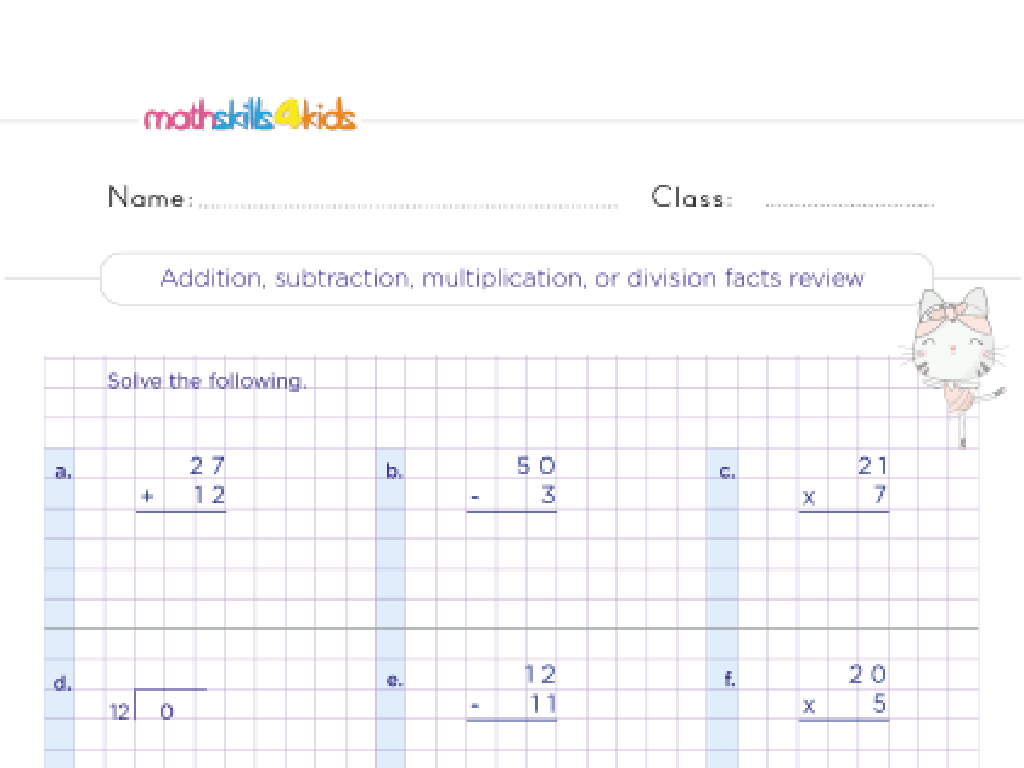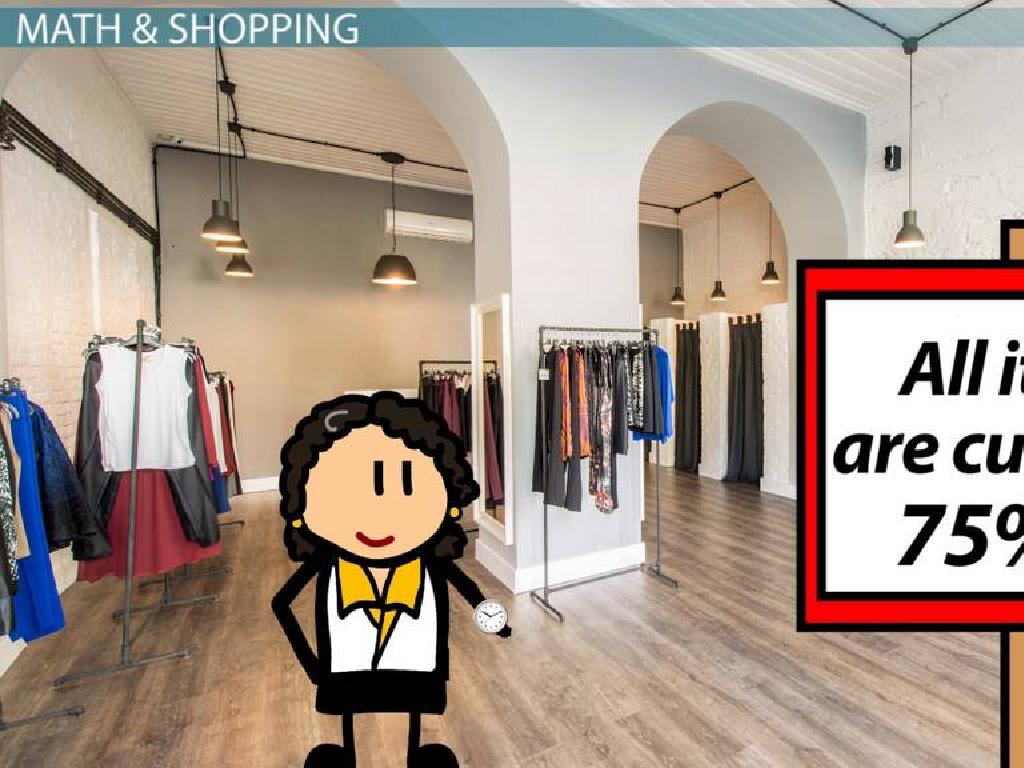Use Cube Trains To Solve Subtraction Word Problems - Up To 10
Subject: Math
Grade: Kindergarten
Topic: Subtraction Word Problems Up To 10
Summary: Introduce Kindergarten students to subtraction with this engaging and hands-on math lesson using cube trains. Through storytelling, physical block manipulation, and real-life examples, children learn to visualize subtraction by taking away cubes and counting what's left. Activities include partner practice, building their own subtraction stories, and acting out fun math problems. Perfect for reinforcing subtraction up to 10, this interactive lesson builds strong foundational skills with visual and tactile learning.
Please LOG IN to download the presentation. Access is available to registered users only.
View More Content
Welcome to Subtraction!
– Learn to take away numbers
– Subtraction shows how many left
– Use cube trains for subtraction
– Cube trains are blocks joined to represent numbers
– Practice with fun examples
– Example: Start with 10 cubes, take 2 away, count what’s left
|
This slide introduces the concept of subtraction to Kindergarten students. Begin by explaining that subtraction is like taking away items from a group and then finding out how many items remain. Use cube trains, which are physical manipulatives, to visually demonstrate this concept. Show a train of 10 cubes and remove a few to solve a subtraction problem. Encourage the children to use their cube trains to practice subtracting from 10 with different numbers. Provide simple word problems for them to solve using the cube trains. For example, ‘If you have 10 apples and eat 2, how many do you have left?’ This hands-on activity will help them grasp the concept of subtraction in an engaging and interactive way.
Learning Subtraction with Cube Trains!
– Subtraction means taking away
– Imagine you have a group of toys and give some away
– It shows ‘how many less’ or ‘left’
– If you had 10 blocks and gave 3 away, how many do you have now?
– Like eating cookies from a plate
– Think about having 5 cookies and eating 2, how many are left?
– Use cube trains for fun subtraction
– Cube trains help us see subtraction by removing cubes from the train
|
This slide introduces the concept of subtraction to Kindergarten students using relatable examples and hands-on activities with cube trains. Start by explaining subtraction as the process of taking away from a group and finding out how many are left. Use everyday scenarios like eating cookies to illustrate the point. Then, transition to using cube trains, a tangible tool that allows students to physically remove cubes and visualize the subtraction process. Encourage the children to create their own subtraction stories with cube trains and share with the class. This interactive approach helps solidify their understanding of the concept of subtraction.
Meet the Cube Trains: Learning Subtraction
– Cube trains are like toy blocks
– Each cube represents one item
– Imagine each cube is one apple
– Breaking trains shows subtraction
– If we start with 5 cubes and take 2 away, how many are left?
– Practice with real-life examples
– Use cube trains to solve ‘5 apples – 2 apples’
|
This slide introduces cube trains as a visual and tactile tool to help Kindergarten students understand the concept of subtraction. Each cube in the train represents one unit, such as an apple, toy, or any other countable item. By physically breaking off parts of the cube train, children can see and feel the process of ‘taking away’ which is central to subtraction. Encourage the students to use cube trains to solve simple subtraction problems, reinforcing the concept with items they are familiar with from their daily lives. For example, if a child has a train of 5 cubes, and they remove 2 cubes, they can easily count the remaining cubes to find the answer. Provide several real-life scenarios where students can apply this method, ensuring they grasp the concept of subtraction in a fun and engaging way.
Solving Subtraction Stories with Cube Trains
– Read a subtraction story
– Example: Sam’s 10 blocks
– Sam starts with 10, gives away 3
– Give away some blocks
– How many does Sam give to his friend?
– Count remaining blocks with cubes
– Use cubes to subtract 3 from 10
|
This slide introduces students to solving subtraction word problems using a hands-on approach with cube trains. Start by reading the story problem aloud and ensure the students understand the scenario. Present the example of Sam who has 10 blocks and gives 3 away. Ask the students how many blocks Sam has now to engage them in thinking about the problem. Then, demonstrate using cube trains to represent the 10 blocks and physically remove 3 to find the answer. Encourage the students to use their own cube trains to solve the problem. This visual and tactile method helps solidify the concept of subtraction for young learners. For the activity, prepare different story problems for the students to solve with their cube trains, ensuring they understand the process of ‘taking away’ to find the remaining amount.
Let’s Solve Together: Subtraction with Cube Trains
– Start with a 10-cube train
– Sam gives away 3 cubes
– Imagine Sam sharing his cubes
– Break off 3 cubes from the train
– Physically separate the cubes
– Count the remaining cubes
– This is the answer to our problem
|
This slide is an interactive class activity designed to teach students subtraction using a hands-on approach with cube trains. Start by showing a cube train made up of 10 cubes. Explain that Sam has 10 cubes but he decides to give away 3 to a friend. Have the students physically break off 3 cubes from their trains. Then, ask them to count the remaining cubes in their train to find the answer to the subtraction problem. This activity helps students visualize the subtraction process and reinforces the concept that subtraction is essentially the removal of a certain number of items from a group. For students who finish early or need an additional challenge, provide them with different subtraction scenarios to solve using their cube trains.
Practice Time: Subtraction with Cube Trains
– Try a subtraction word problem
– Use cube trains for help
– Cube trains can represent numbers for easy subtraction
– Work with a partner
– Two heads are better than one! Discuss the problem together
– Share your cube trains
– Show and tell how you solved the problem
|
This slide is designed to engage students in a hands-on activity to practice subtraction with the help of cube trains. Encourage the children to visualize the subtraction process by physically removing cubes from their trains. Working with a partner will foster collaboration and communication skills. As a teacher, walk around the classroom to assist pairs as needed and ensure that each student is participating. Possible activities include: creating simple subtraction word problems for the students to solve, having students create their own word problems for their partner, or setting up stations with different subtraction problems that students can rotate through.
Class Activity: Build Your Own Cube Train
– Receive your cube trains
– Create a subtraction story
– Use the cubes to represent objects in your story
– Show and explain to the class
– Take turns presenting your cube train subtraction
– Discuss how many cubes are left
– How did you subtract to find the remaining cubes?
|
This interactive class activity is designed to help Kindergarten students understand subtraction through a hands-on experience with cube trains. Each student will receive a set of cube trains to manipulate and create a story that involves subtracting cubes. They will then present their story to the class, explaining the subtraction process and how many cubes are left. Teachers should guide the students through the activity, ensuring they understand the concept of taking away and counting the remaining cubes. Possible variations of the activity could include different starting numbers of cubes, subtracting different amounts, or even adding a second step of subtraction. The goal is to make subtraction tangible and fun.
Review: Subtraction with Cube Trains
– Subtraction means taking away
– Like when we have 5 apples and eat 2, we have 3 left.
– Cube trains show subtraction visually
– Each cube taken away from the train shows 1 less.
– Act out stories to solve problems
– Use cubes to represent story characters or objects.
– Practice with cube trains
|
This slide is a recap of what we’ve learned about using cube trains to understand subtraction. Subtraction is the concept of taking away from a group and finding out the remaining quantity. Cube trains are a tangible way for students to visualize this process by physically removing cubes to represent the subtraction. Encourage students to think of subtraction as an action, such as taking away pieces of fruit or toys. By acting out word problems with cube trains, students can see the problem unfold, which helps in understanding and solving it. During the class, have students practice with cube trains by creating their own subtraction stories and solving them. This hands-on activity reinforces their learning and makes abstract concepts concrete.
Goodbye and Great Job!
– Excellent work with cube trains!
– Practice subtraction at home
– Try subtracting items like toys or snacks
– Use your cube trains for fun
– Make a game with your cube trains
– Exciting subtraction methods ahead!
|
This slide is meant to congratulate the students on their hard work during the lesson and to encourage them to continue practicing at home. Remind them that subtraction is a skill that can be fun and is useful in everyday life. Suggest that they use their cube trains to subtract different items around the house, like toys or snacks, to make the learning process more engaging. Also, hint at the upcoming lessons where they will learn even more fun and interactive ways to understand subtraction, keeping their interest piqued for future classes.




